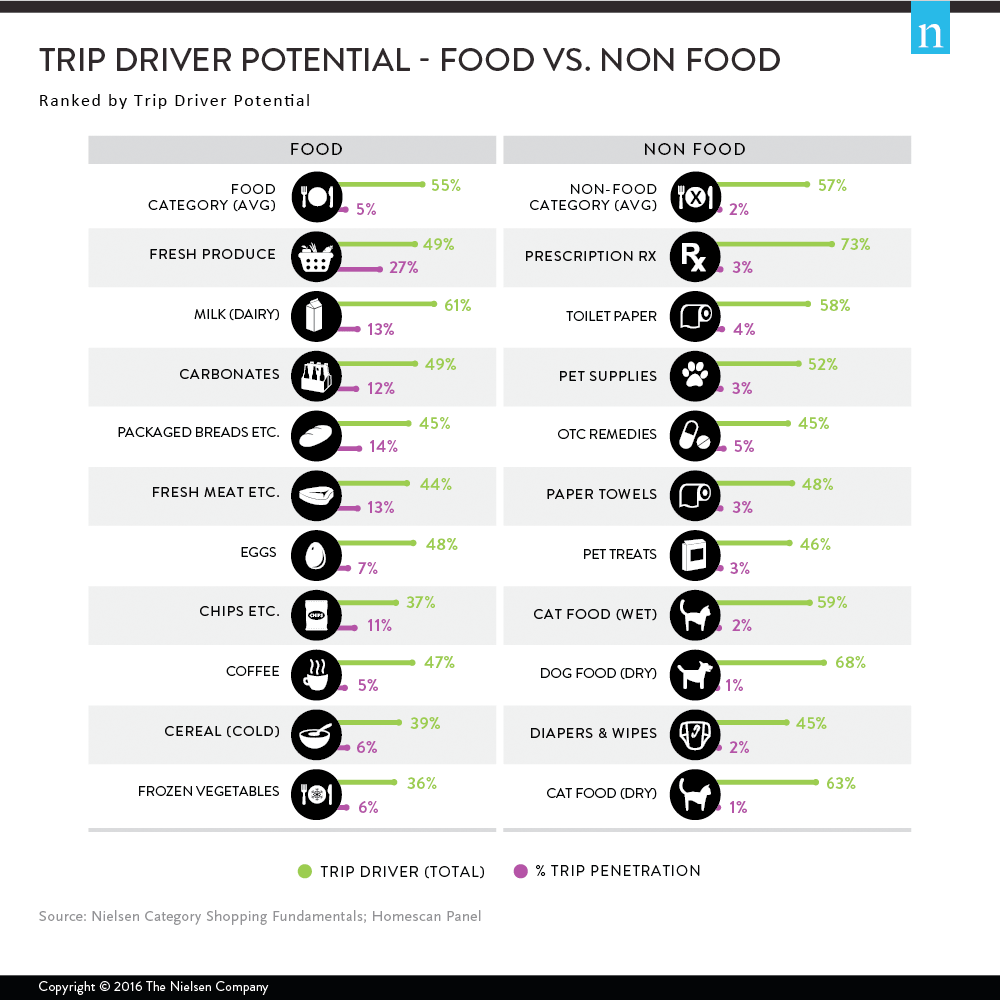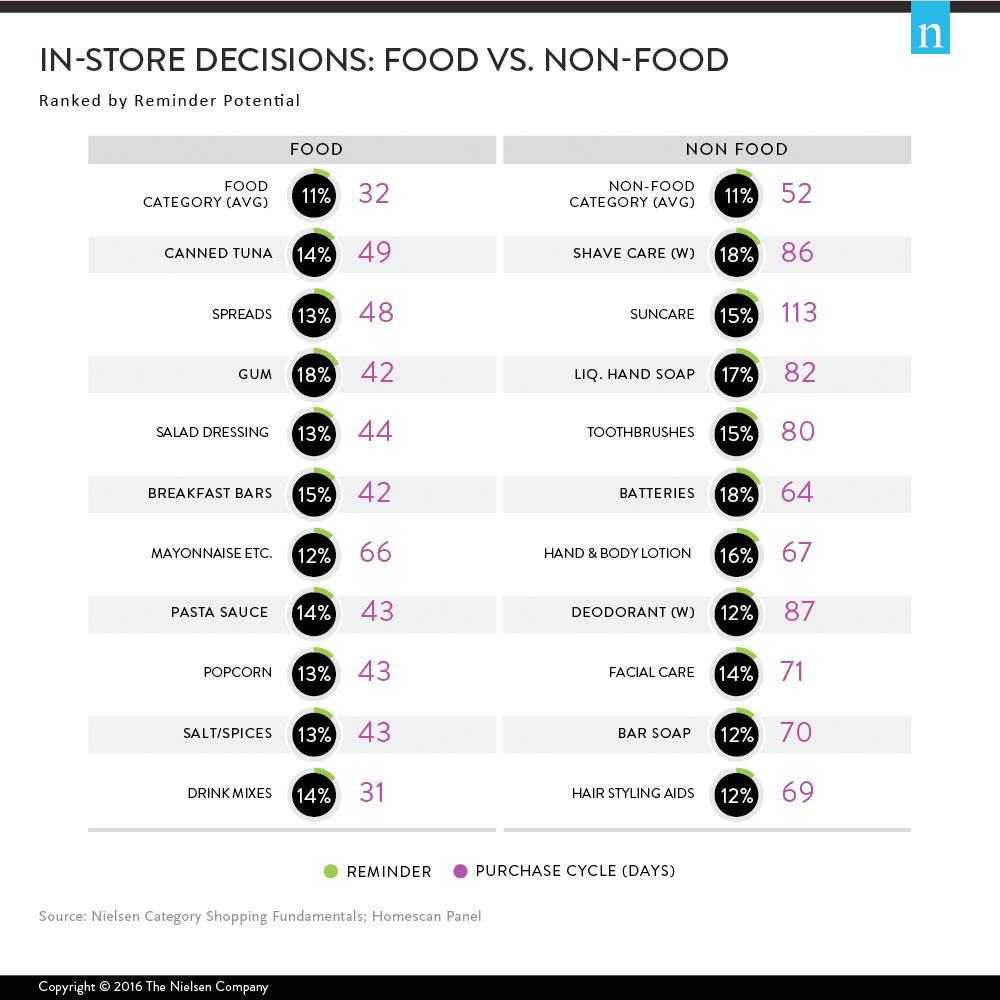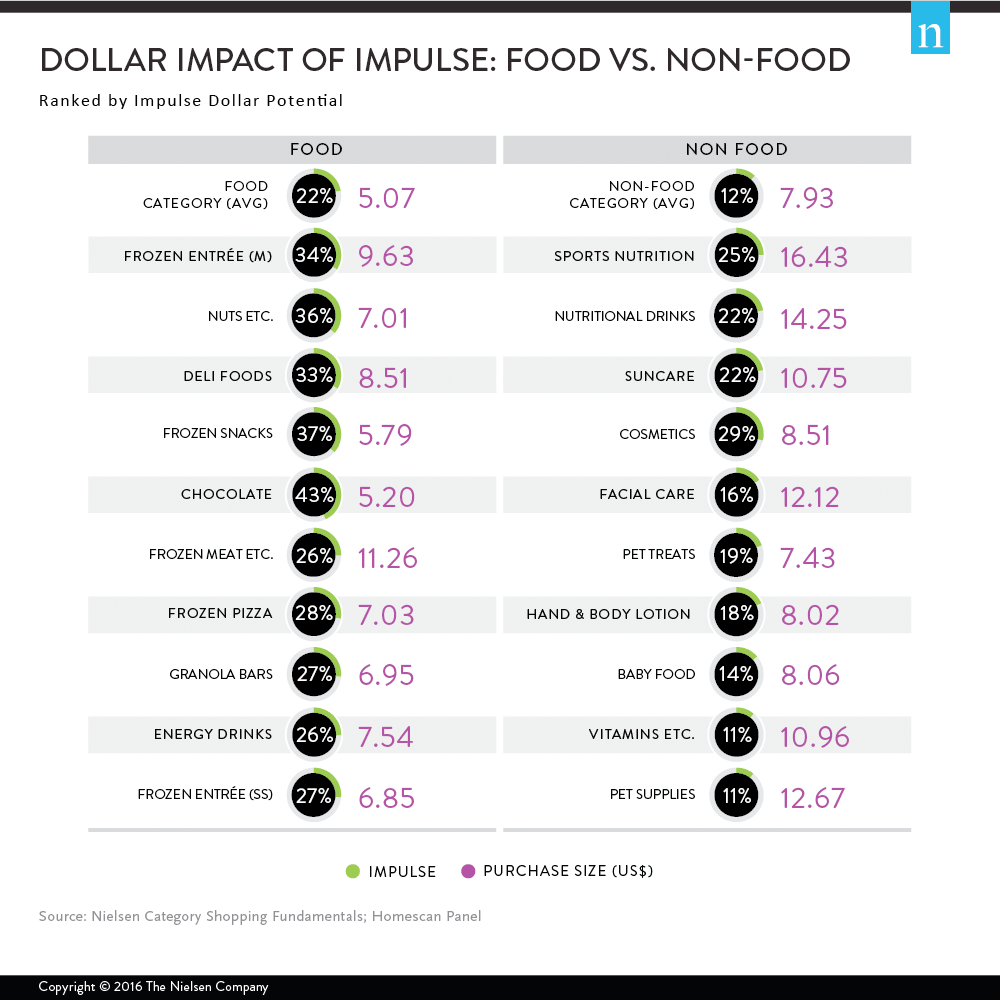Understanding the Impact of Category Shopping Fundamentals
May 26, 2016
![]() There’s no mistaking the impact that digitalization and personalization trends are having on the consumer’s path to purchase. With convenience and preference driving behaviors and the paths consumers take to the register—whether virtual or traditional—it’s vital for brands and retailers to understand what’s actually influencing their choices. It’s also essential to understand how categories perform relative to others. That’s where shopper fundamentals can help.
There’s no mistaking the impact that digitalization and personalization trends are having on the consumer’s path to purchase. With convenience and preference driving behaviors and the paths consumers take to the register—whether virtual or traditional—it’s vital for brands and retailers to understand what’s actually influencing their choices. It’s also essential to understand how categories perform relative to others. That’s where shopper fundamentals can help.
But having the individual elements of shopper behavior isn’t enough. The winners of tomorrow will have the insights they need, and that information will be coherently synthesized so they can develop holistic strategies. In short, with the pace of evolution increasing, brands need to be able to overlay specific shopper attitudes with true purchasing behavior in order to determine both the impact and opportunity.
In reviewing the findings from Nielsen’s most recent Category Shopping Fundamentals study, retailers and manufacturers can see how a better understanding of three key influencers may open doors to new incremental revenue.
FRESH PRODUCE AND BEVERAGES ARE TOP TRIP DRIVERS
Knowing what consumers are buying, and buying often, is critical in any retail environment. In the CPG realm, fresh produce, beverages (soft drinks and coffee) and eggs are strong trip drivers, ranking highest among all food departments in terms of what drives the most trips to the store. With that insight in mind, retailers have a better sense of where to focus their store marketing efforts to drive additional incremental visits.
In addition to being key trip drivers, consumers purchase items from the fresh department most frequently per trip. Fresh unbranded staples like produce, milk, meat and eggs are key trip-driving categories. In fact, consumers buy fresh produce and milk in 40% of all trips to the store.
In the non-food space, the prescription and pet care categories dominate in terms of trip drivers. Unlike most other fast-moving consumer goods (FMCG), consumers make a significant amount of trips for specialty items, like products in the pet category. However, these trips represent an opportunity for conventional grocery and mass stores, which could lead to higher overall basket rings.

THE CENTER STORE IS HOME TO VARIOUS IMPULSE-BUY CATEGORIES
While there’s no denying the importance of a shopping list that details the “must buys,” in-store reminders are a perfect way for retailers and manufacturers to highlight products that may not have made shoppers’ lists but perhaps should have. These in-store reminders represent a good way to imply existing needs that may not be top-of-mind for consumers.
Items that don’t make shoppers’ lists are typically non-essentials, most often those in the non-food category. Within non-food, personal care and household care products have the highest potential to spark an impulse buy. In fact, nearly all non-food categories that show significant capacity for reminder purchases come from the personal care aisle. Top non-food purchases include women’s shave care, sun care, hand soap, toothbrushes and lotions. By partnering and developing ways to engage consumers in these areas of the store, retailers and manufacturers have an opportunity to have a greater influence on decision-making in the aisles.
But impulse buying isn’t limited to the non-food areas. Items like gum, breakfast bars and popcorn have as much likelihood to get picked up by browsing shoppers as deodorants and certain lotions. In looking at the food categories, the items that show capacity for reminder purchases largely stem from the center store. While the center store has faced challenges in recent years, shopper trends indicate an opportunity for retailers and manufacturers to drive increased awareness around key impulse-oriented products that shoppers are likely to pick up along their journeys.

UNDERSTANDING THE DOLLAR IMPACT OF THE IMPULSE PURCHASE
In addition to knowing which categories inspire impulse buys, it’s equally critical for retailers and manufacturers to understand the dollar impact those purchases can have on the bottom line. While shoppers’ planned purchases typically revolve around essentials like food, certain food categories are huge impulsive-buy drivers. Frozen foods, snacks and energy drinks are top impulse buys in the food realm.
Among the non-food categories, sports nutrition and nutritional drinks are the top two functionally driven categories with the highest potential to build larger baskets from impulse purchases. Non-essential personal care categories such as sun care, cosmetics and face care are opportunity areas to drive engagement and build basket size (buying more items and spending more per trip).

Understanding the degree to which shoppers can be influenced helps inform which tactical marketing levers retailers and manufacturers can use. Planning and engagement options can boost pre- and in-store activation efforts, and understanding the dollar impact of each option can help marketers which points in the path to purchase are most important to intercept shoppers. And with those insights, they’ll know which marketing levers are most influential in reaching shoppers.































